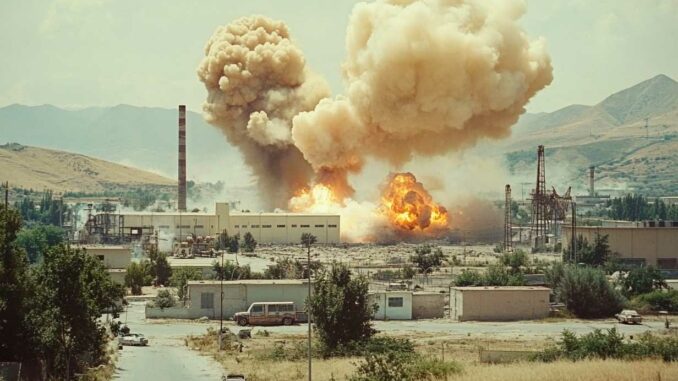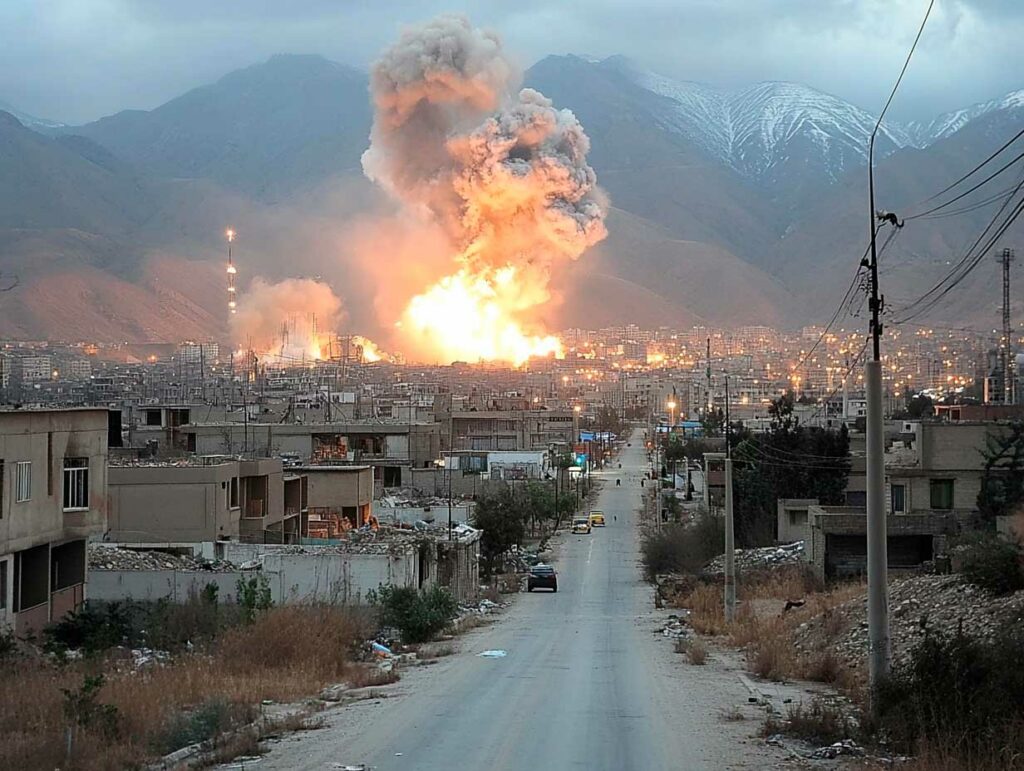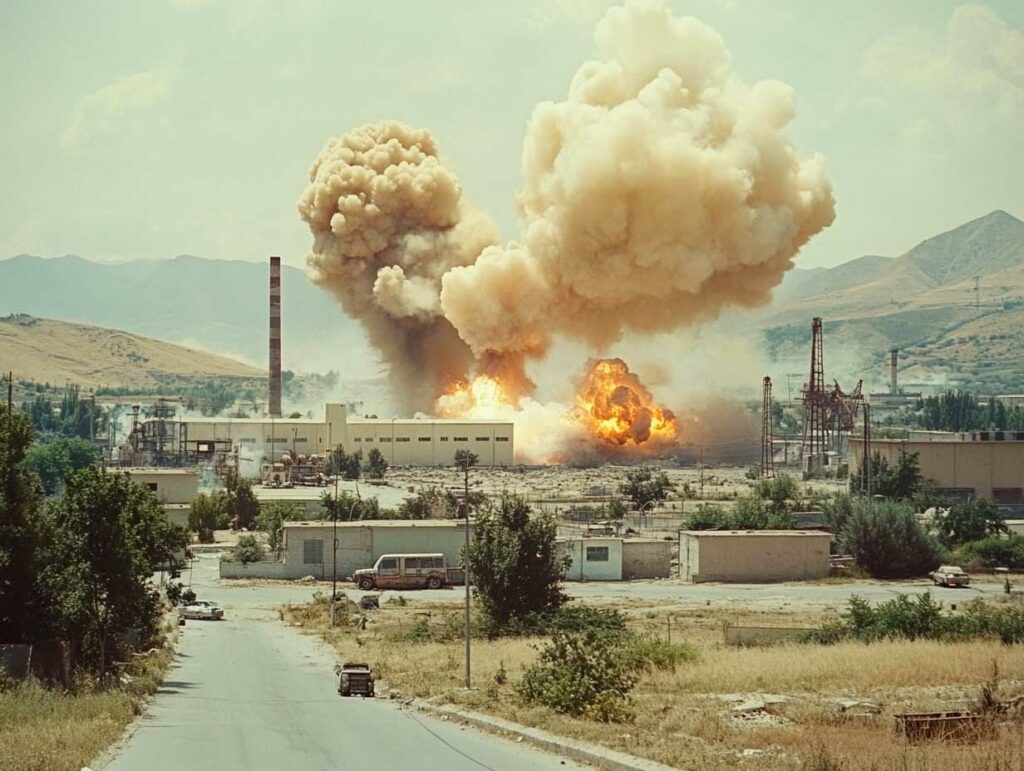
Israel’s June 13, 2025, strikes hit Iran’s nuclear sites & IRGC leaders, aiming to curb threats. Risks escalation, oil disruption & derailed talks.
On June 13, 2025, Israel launched a large-scale military operation against Iran, codenamed “Operation Rising Lion,” targeting nuclear facilities, military infrastructure, and high-ranking officials. This marked a significant escalation in the ongoing Israel-Iran conflict, shifting from proxy warfare and covert operations to direct, overt strikes on Iranian soil. The operation followed heightened tensions, including Iran’s missile attacks on Israel in 2024 and stalled U.S.-Iran nuclear negotiations. This 800-word article explores the details of the strikes, the sites attacked, casualties, objectives, methods, and potential consequences, drawing on available reports.
The Attacks: Sites Targeted and Methods Employed
Israel’s operation involved over 200 fighter jets, including F-35 Lightning II stealth fighters, conducting multiple waves of airstrikes across Iran. The primary targets included Iran’s nuclear facilities, notably the Natanz uranium enrichment site in Isfahan province, which sustained significant damage, and sites in Khondab and Khorramabad. The strikes also hit ballistic missile factories, air defense systems, and military bases in Tehran, Kermanshah, Karaj, and Hamedan. A residential building housing Islamic Revolutionary Guard Corps (IRGC) personnel was struck, along with other residential structures in Tehran.
The operation, executed with precision, involved heavy munitions launched from a distance of 70-100 kilometers outside Iranian airspace, supported by extensive aerial refueling and intelligence from Israel’s Mossad. Israel also conducted covert sabotage operations targeting missile sites and air defenses. Preceding strikes in Syria disrupted Iranian radar capabilities, enhancing Israel’s operational advantage. Eyewitnesses reported massive flames and repeated blasts in Tehran, with explosions near military bases and neighborhoods housing senior commanders.

Casualties and Damage Assessment
The strikes resulted in significant casualties among Iran’s military and scientific elite. Iranian state media confirmed the deaths of IRGC Commander-in-Chief Hossein Salami, Armed Forces Chief of Staff Major General Mohammad Bagheri, and Deputy Commander Gholam Ali Rashid. Two prominent nuclear scientists, Fereydoun Abbasi-Davani and Mohammad Mehdi Tehranchi, were also killed. Iranian reports indicated several civilian casualties, including children, in a residential area in Tehran, though exact numbers remain unconfirmed.
The Natanz nuclear facility, a cornerstone of Iran’s uranium enrichment program, was heavily damaged, potentially setting back Iran’s nuclear ambitions. Other targets, including missile production sites and air defense systems, were also severely impacted, further weakening Iran’s military capabilities. Iranian state media claimed the damage was limited, but the loss of key personnel and infrastructure suggests a significant blow to Iran’s defense and nuclear programs.
Reasons and Objectives
The strikes were driven by Israel’s perception of Iran’s nuclear program as an existential threat, exacerbated by Iran’s refusal to halt uranium enrichment during U.S.-led nuclear talks in 2025. Israel’s intelligence, including Mossad’s 2018 seizure of nuclear documents from Tehran’s AMAD Project, indicated Iran’s intent to develop nuclear weapons. The operation was also a response to Iran’s 2024 missile attacks on Israel, codenamed “Operation True Promise” 1 and 2, which targeted Israeli military sites in retaliation for the assassinations of Hamas leader Ismail Haniyeh, Hezbollah leader Hassan Nasrallah, and IRGC general Abbas Nilforoushan.
Israel’s objectives were multifaceted: to degrade Iran’s nuclear capabilities, disrupt its ballistic missile production, and eliminate key military and scientific figures to hinder Iran’s ability to threaten Israel. The strikes aimed to exploit Iran’s weakened position, as its proxies—Hezbollah, Hamas, and Syrian networks—have been significantly diminished by Israeli operations since 2023. Prime Minister Benjamin Netanyahu emphasized the operation’s goal to “roll back the Iranian threat to Israel’s survival,” targeting both nuclear and military infrastructure.
Methods and Strategic Context
The operation was meticulously planned, with Israel notifying the U.S. beforehand but acting unilaterally. The use of over 200 warplanes and covert operations underscored Israel’s technological and intelligence superiority. The strikes were preceded by U.S. intelligence reports in May 2025 indicating Israel’s preparations, including air exercises and munitions movements. Israel’s decision to act came amid frustration with Iran’s intransigence in nuclear talks and the International Atomic Energy Agency’s censure of Iran on June 12, 2025, for non-compliance with nuclear obligations.

Potential Consequences
The strikes have heightened the risk of a broader regional conflict. Iran’s Supreme Leader Ayatollah Ali Khamenei vowed “severe punishment,” and Iran launched over 100 drones in retaliation, which Israel intercepted. Iran’s weakened air defenses and depleted proxy network may limit its response options, but attacks via proxies like the Houthis or Iraqi militias remain possible. Such escalation could target U.S. bases in the region, drawing Washington into the conflict despite its non-involvement in the strikes.
Globally, the attacks disrupted oil markets, with prices jumping nearly 12% due to fears of supply disruptions. Regional actors, including Saudi Arabia and Jordan, condemned the strikes and denied their airspace was used, reflecting concerns about being drawn into the conflict. The strikes also risk derailing U.S.-Iran nuclear talks, with President Trump expressing hope for diplomacy but warning of military action if negotiations fail.
A full-scale war could lead to significant casualties, further destabilize the Middle East, and disrupt global energy supplies. Israel’s actions may embolden further strikes, particularly if Iran rebuilds its capabilities or escalates via proxies. Conversely, Iran’s domestic economic struggles and weakened regional influence may force a restrained response to avoid catastrophic escalation.
Israel’s June 13, 2025, strikes on Iran’s nuclear and military infrastructure represent a bold escalation in their decades-long conflict, driven by fears of Iran’s nuclear ambitions and its 2024 attacks on Israel. The operation successfully targeted key sites and personnel, significantly weakening Iran’s military and nuclear capabilities. However, the strikes risk provoking a retaliatory cycle, potentially involving regional actors and global powers. With oil markets volatile, nuclear talks in jeopardy, and Iran’s leadership under pressure, the Middle East stands at a critical juncture, where diplomatic restraint or miscalculation will determine whether the region descends into broader conflict.
War Wings Daily is an independant magazine.